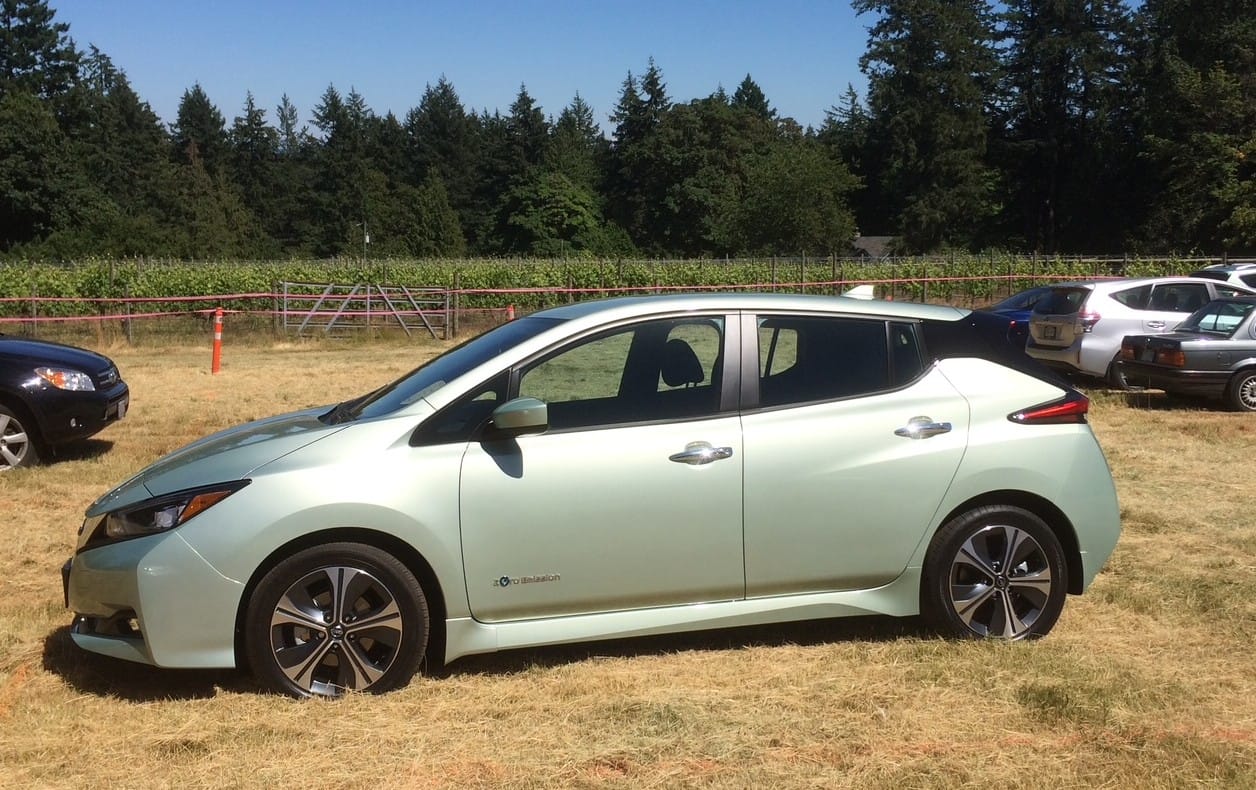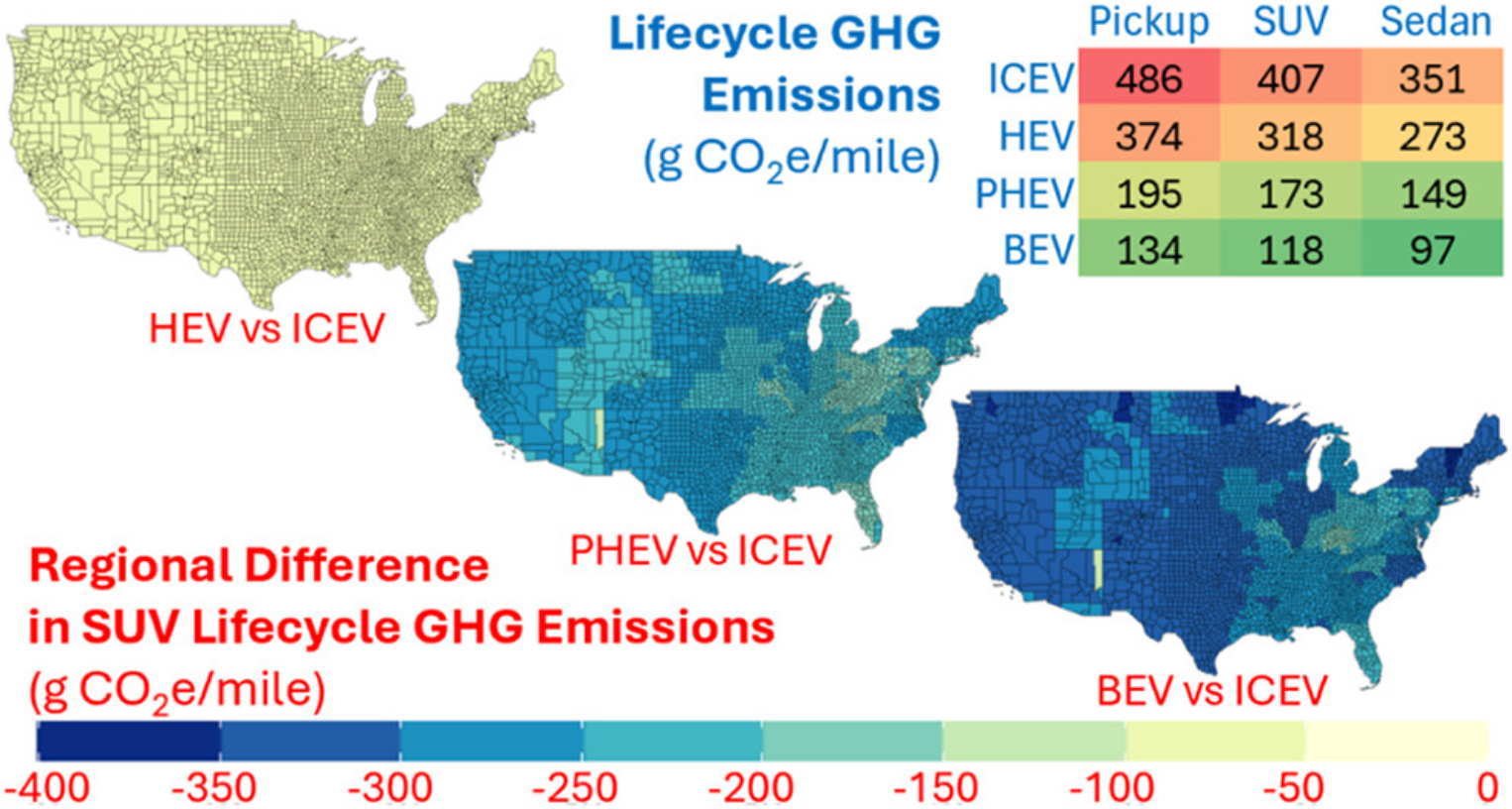EVs Deliver Lowest Lifecycle Carbon Footprint Everywhere
Cradle-to-grave GHG emissions of light duty electric vehicles are lower than all forms of their internal combustion-engined equivalents, no matter the region

Two of the most common objections we hear to the widespread deployment of light-duty battery electric vehicles (BEVs) are, firstly, the carbon footprint of making the batteries outweighs any carbon savings from not burning fossil fuels during operation, and, secondly, the carbon footprint of fossil-fueled electricity to charge BEVs is worse than the fuel burned by a comparable internal combustion vehicle (ICEV).
Years ago these concerns might have had some validity in some places, but the technology of BEVs has advanced rapidly and the electrical grid is also transforming. Now, neither of those objections to BEVs is valid.
The evidence comes from a comprehensive study by a group of researchers in the Center for Sustainable Systems at the University of Michigan in Ann Arbor.1 The group looked at current year (2025) BEVs, plug-in hybrid electric vehicles (PHEVs), hybrid electric vehicles (HEVs), and ICEVs across a range of cars, light trucks, and SUVs. The study examined cradle-to-grave emissions under different use cycles, a variety of load and ambient temperature conditions, and for a variety of electrical grid generation energy types. While production and end-of-life emissions for BEV battery vehicles are larger than for internal combustion vehicles, those emissions are dwarfed by in-use emissions in the case of ICEVs. Looking at the whole life-cycle, the study found BEVs generate fewer emissions than PHEVs, which generate fewer emissions than HEVs, which generate fewer emissions than ICEVs, and—here is the kicker—in every county of the USA.
Some differences are stark. On average, a 480 km (300 mile) range battery electric vehicle generates only about a quarter of the life cycle emissions of an equivalent internal combustion vehicle, and only about two-thirds the emissions of an equivalent plug-in hybrid.
The study also uncovered some interesting nuances.
Regional variations in grid carbon intensity (up to an order of magnitude different), contribute more to life-cycle emission differences than do temperature variations, which only cause an adjustment factor of 1.33 in the worst case.
The study also confirms that weight matters, to no one’s surprise.
Lighter vehicles generate fewer emissions than their heavier counterparts of the same type, e.g. a compact ICEV vehicle generates 34% fewer emissions than a heavy ICEV pickup truck. Hauling a load increases emissions but the increase is worse for internal combustion than hybrid vehicles. Hauling a 1133 kg (2500 lb) load in an ICEV pickup increases its emissions by 22%. Hauling the same load in a HEV pickup increases its emissions by only 13%, although it does significantly reduce its range (up to a third).
The study’s authors have built a free online calculator that incorporates the results of the study. The calculator enables you to compare vehicle-to-vehicle, all vehicles at once (via a heat map) or county-by-county.2

While the study only looked at the contiguous United States, the country has enough different climate zones and electrical grids have enough variation, that if you live outside of the USA, you can likely find a region in the study that resembles your situation enough that the study and the tool will be useful for you to make comparisons.
Reading
- Smith, Elizabeth, Maxwell Woody, Timothy J. Wallington, et al. “Greenhouse Gas Reductions Driven by Vehicle Electrification across Powertrains, Classes, Locations, and Use Patterns.” Environmental Science & Technology, ahead of print, American Chemical Society, August 25, 2025. https://doi.org/10.1021/acs.est.5c05406.
- https://vehicle-emissions-calculator.vercel.app/ accessed 14 Sep 2025